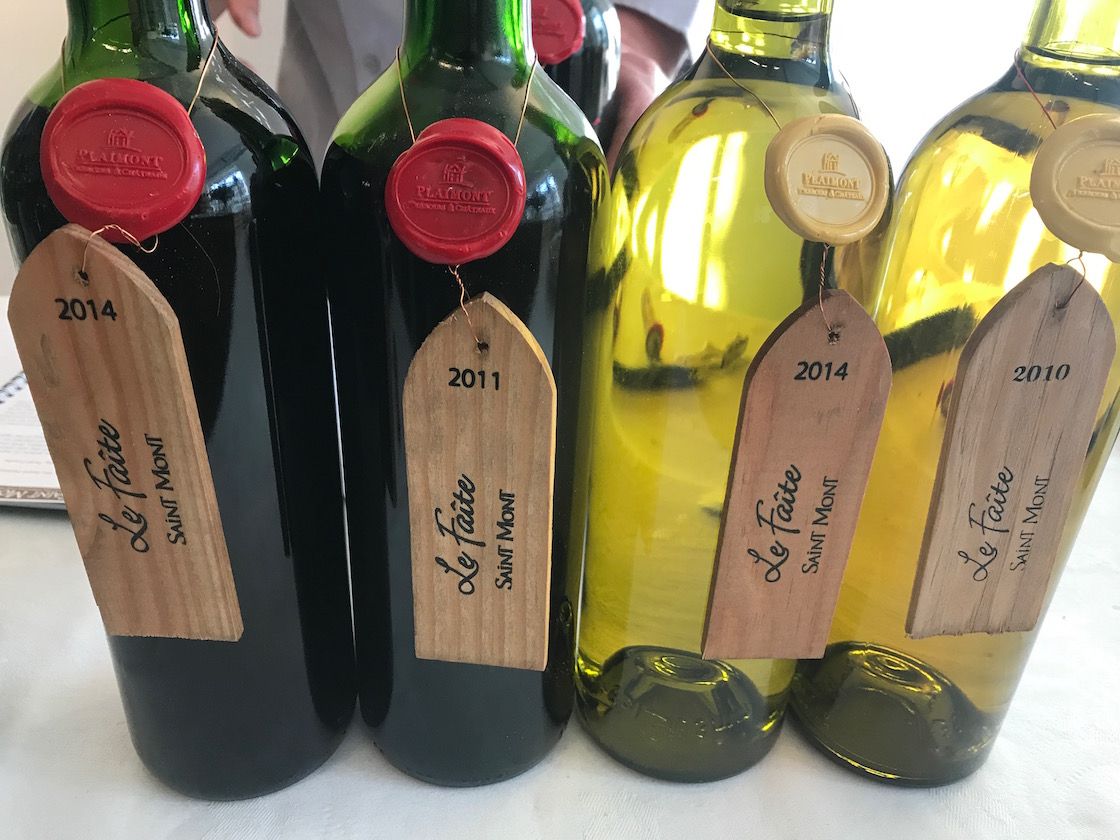The ‘lost grape’ masterclass was just one part of the Plaimont Producteurs London event – on show were its top end Le Faîte wines, a rare Prephyllox wine from vines planted in 1871, and a range of wines from the AOC Saint Mont appellation.
We in Britain, we just love an underdog. The more they have to fight against the odds, the more we warm to them with open arms.
The tasting hosted by AOC Saint Mont and Plaimont Producteurs was a case in point. Consider the hurdles:
- AOC Saint Mont is a pretty much unknown French appellation in the UK
- Saint Mont’s wines were once accorded an official ‘simple’ status – the only wine region in France to have that ignominy
- Its main grape is Tannat which produces hefty, tannic reds
- Our hosts, Plaimont Producteurs, is a wine co-operative
- Everyone there seems to wear berets
You see? Immediately you start warming to them.

‘Allo ‘Allo meets Harrison Ford
The ambitious London event was attempting a number of things: to show off the wines of both Saint Mont and Plaimont Producteurs (the latter accounts for 98% of the AOC output); to put a spotlight on their vine conservation work; and to allow attendees to sample microvinifications of long-lost grape varieties.
For a producer and an appellation that could have had so much going against it, ‘quelle surprise’! the house was full and attendees walked away fully enlightened with many preconceptions challenged and heads filled with new facts and figures.
Did you know, for example, that Saint Mont is one of the very few regions in the Old World where vines date back to prephylloxera? That their 1801 vineyards are the oldest in France and the only vegetable matter to be accorded National Monument status in the whole of France? That you can still find vines growing wild in the woods?
Well you do now.
Raiders of the Long-Lost Grapes
Apart from tasting the wines (more on that later) the real eye-opener was how Plaimont Producteurs is retrieving long-forgotten grape varieties, testing them, and then planting them out for commercial purposes, the subject of the day’s first masterclass.
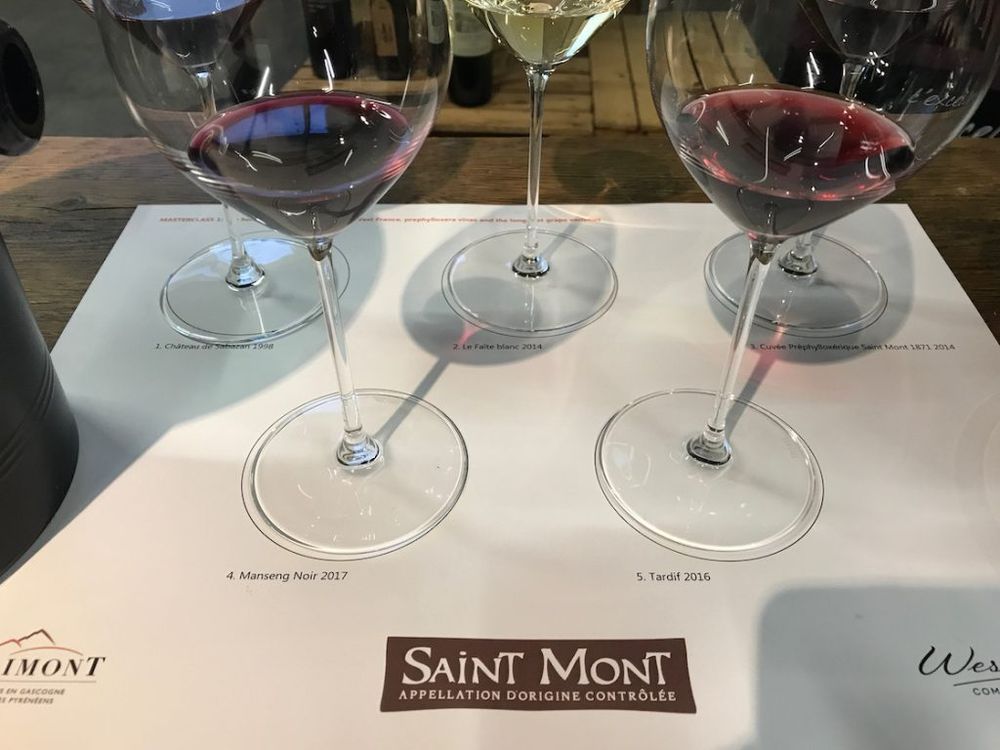
Manseng Noir was discovered in a 150 year-old vineyard in Viella, AOC Madiran, was propagated by Plaimont Producteurs and now has 40 hectares planted. The winery is currently producing Moonseng, a Merlot/ Manseng Noir blend although it hopes to produce a 100% Manseng Noir in a few years time. One of the reason this excites the company so much is that with global temperatures on the rise, grapes that produce wines of high alcohol, like Tannat, need a lower alcohol blending partner.
The microvinification of Manseng Noir that we tasted clocks in at 11.4% ABV – remarkable given that the grapes are being grown in the South West of France.The tannins had a surprising coolness, the wine was light with open black fruit characters and there was an almost Gamay-like approachability to the wine. Quite a find!
For all you grape nerds out there – the grape is genetically linked to Tannat, Dubosc 1 and Negret de Banhars.
Tardif is another grape discovered by Plaimont Producteurs, this time on the vineyard at Sarragachies in Saint Mont. It has just been given an official listing and 1500 vines are being planted this Spring with 2020 earmarked for the start of commercial production.
There are only 12 bottles of Tardif in the world (well, a few less after the London tasting!) and, like the Manseng Noir, it is genuinely exciting to taste one of the first bottles produced for maybe centuries. Genetically linked to Pédebernade 4, it has lots of Rotundone in – an organic compound that carries black pepper notes. The wine feels like a cool climate Syrah with seriously great texture and an ABV around 12.5-13.5% . For the winemaker it is late ripening which makes it a great bending partner to Merlot, for example.
There are already 56 different grape varieties identified in Saint Mont and they are still discovering more. Where Manseng Noir and Tardif are now listed in the official Ministry of Agriculture catalogue of grapes, there are another three unofficial grapes we tasted: Morenoa, the snappily-named Pédebernade 5 and Dubosc 1, named after the founder of Plaimont Producteurs, in whose vineyard this grape was found.
The commercial wines of Plaimont Producteurs
It is the bad press that some cooperatives attract that means that Plaimont Producteurs still has an image issue to be aware of. Size-wise they are certainly not an underdog with 40 million bottles produced from 5,300 hectares of vines, making them the largest wine producer in South West France.
Like Foncalieu‘s purchase of Château Haut-Gleon in the Languedoc, Plaimont Producteurs acquired an ancient property in 2015, the Saint Mont Monastery and started releasing wines on the Monastère de Saint Mont label. It does a major cooperative no harm image-wise to have an ancient property they can take press and other visitors to, but it also helps to make a virtue out of producing distinctive wines with a link to the past, be that through obscure varietals, age of the vines or ancient traditions.
The tasting of the commercial wines was split between premium Grands Vins and On-trade and Off-trade wines. Having On-trade and Off-trade clearly delineated was a minor masterstroke of time-saving – other importers please note.
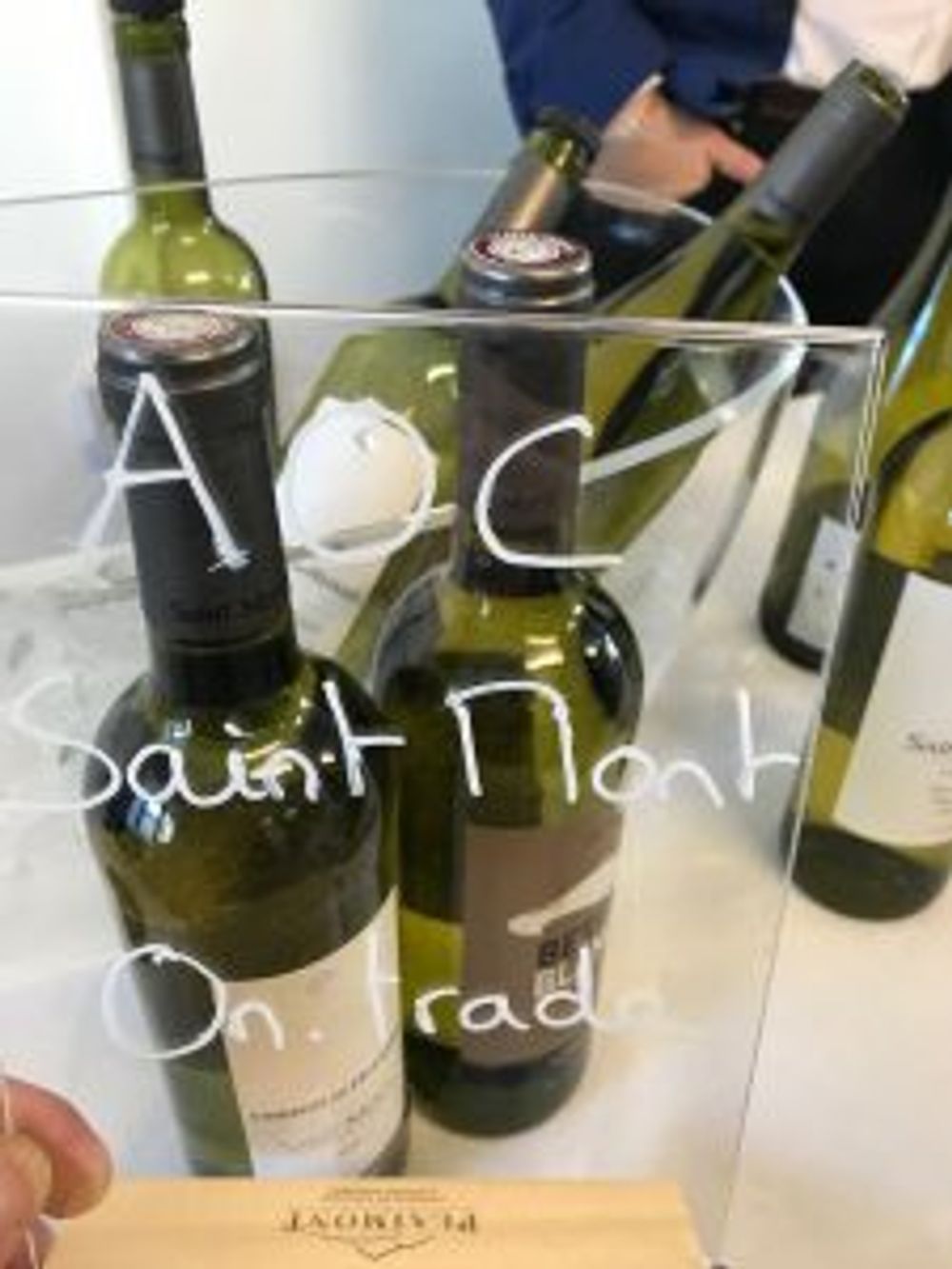
Of the Grands Vins, Les Vignes Préphylloxériques Saint Mont 1871 does exactly what it says on the tin – about 1500 bottles of this Tannat/ Pinenc blend are produced each year from vines that date back to 1871. It’s gorgeous – elegant and more restrained than regular Tannat wines with a lovely acidity, freshness and sandpaper tannins.
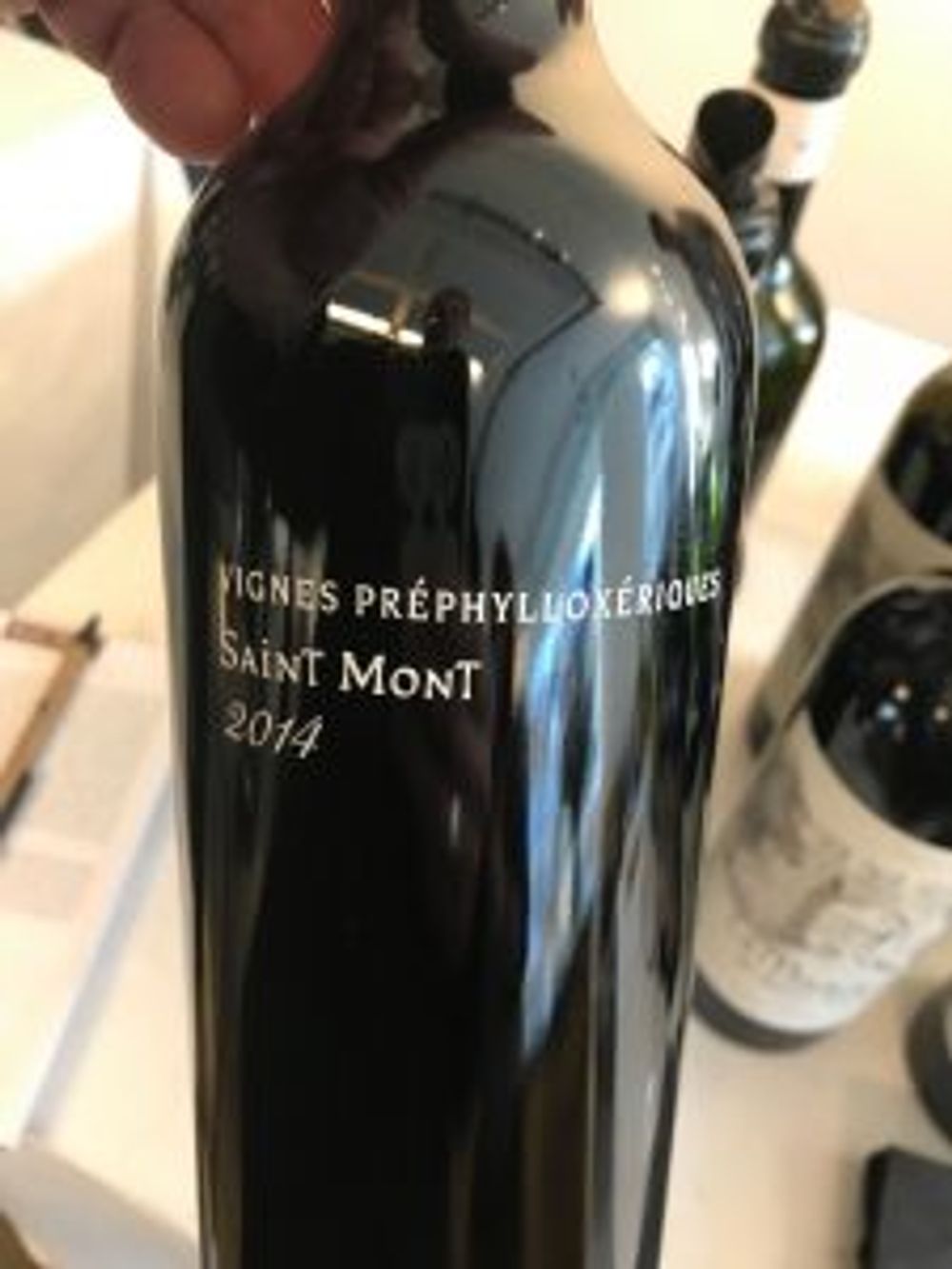
In fact, the freshness of the acidity in all of the Saint Mont wines was notable. To prove the point Château de Sabazan 1998 was sampled at the masterclass. A blend of this stature could easily have been ‘knackered’ and the wine did show signs of considerable evolution but the ‘skeleton’ of acidity was still there – it was quite delicious – and I, for one, managed to locate some from House of Townsend for £13.33 ex VAT. I recommend you do the same!
Aside from the Monastère de Saint Mont wines, whose reds are a terrific Tannat, Pinenc and Cabernet Franc blend, the top Grand Vins wines from Plaimont Producteurs in my mind are the Le Faîte red and white. These wines are noticeable by their wooden labels that harp back to the days of pre-refrigeration when wine was buried to keep them cool and wooden labels attached to aid their retrieval.
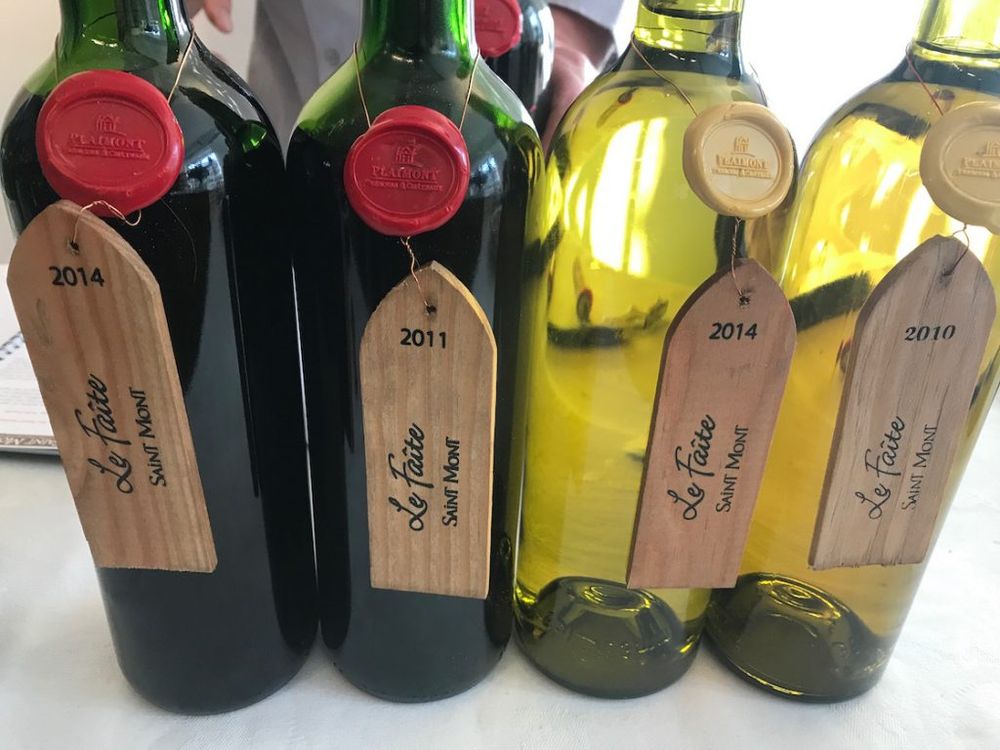
Journalist Jamie Goode, who introduced a presentation given by Olivier Bourdet-Pess, managing director of Plaimont Producteurs and Nadine Raymond, technical coordinator, vinegrower and oenologist, made a good point when he said that when he first saw the wines he was put off by what looks like a gimmick. They are far better than that.
The Le Faîte reds were of a premium level (showing considerable vintage variation) and certainly better than most Tannat blends I have tried in the past but it is the Le Faîte whites that I think is the company’s best wine.
A blend of Gros and Petit Manseng, Petit Courbu and Arrufiac it manages to be complex and big in flavour but with a freshness, purity and curt finish that gives the wine real focus. Pale gold, on the nose: fresh herbs and wet grass; on the palate: a mix of citrus – lemon flesh, grapefruit zest, limoncello. Very tasty and good value too (£16.63 ex. VAT from Corney & Barrow).
Of the more entry level On-trade wines, generally speaking the whites also showed better than the reds and the rosés were a revelation – Provence pale but with extra tension and texture.
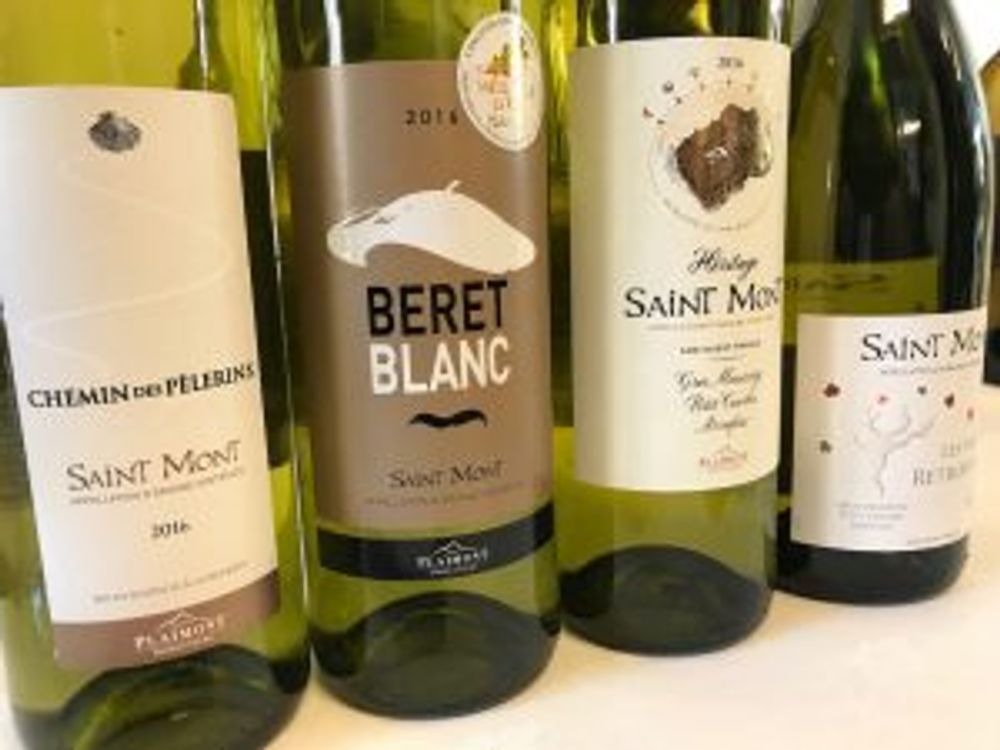
If I had to pick just two I would go for the white and the rosé on the Chemin des Pèlerins label. The white is a blend of Gros Manseng, Petit Courbu and Arrufiac (a mini Le Faîte, if you will) that had a delightful lifted nose, and really interesting complexity.
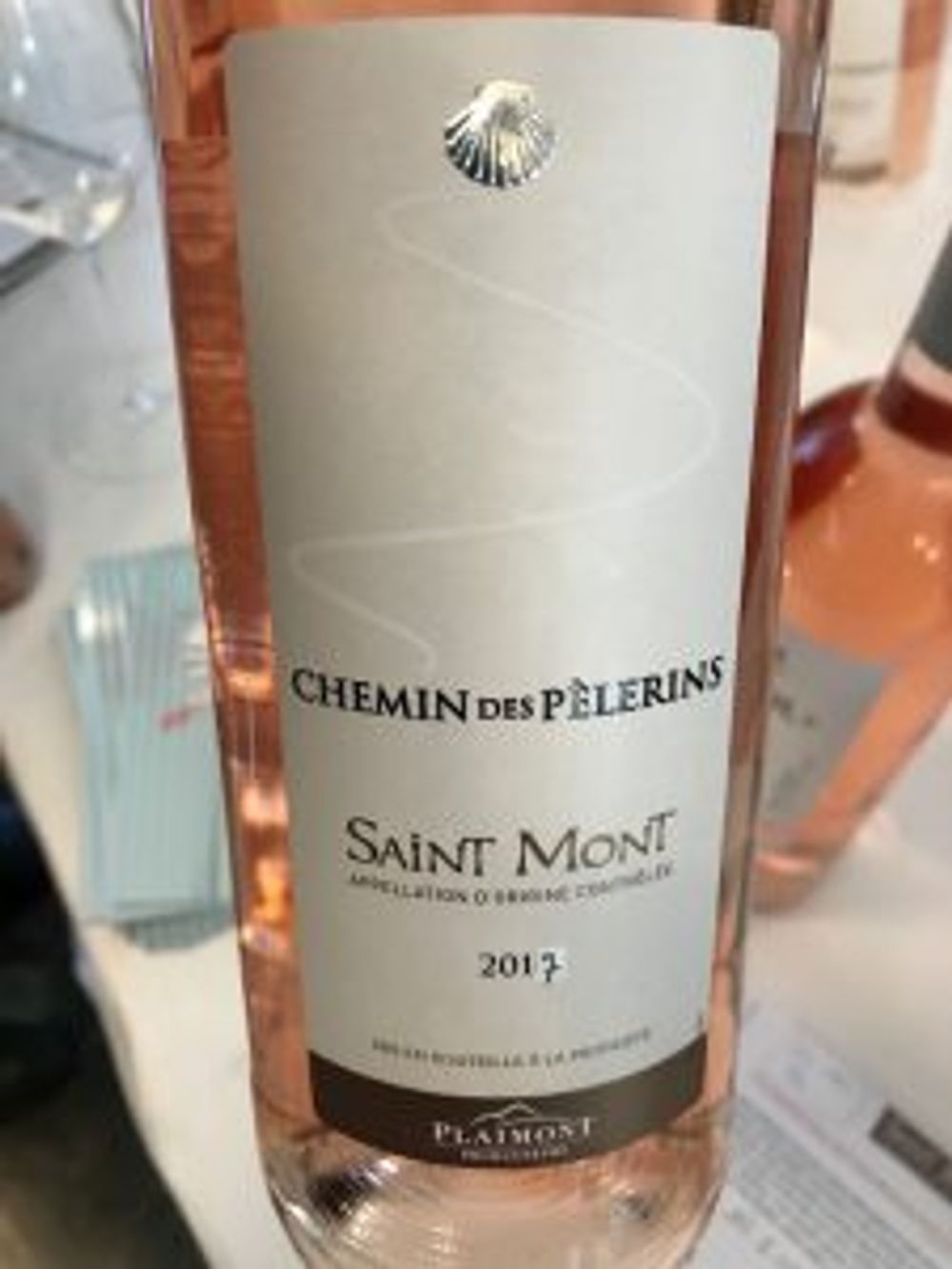
The rosé is a blend of Tannat, Pinenc and Cabernet Sauvignon that has had a 12-hour maceration. Both wines are great value at an Rrp of £7.49 and were given the thumbs up by the sommelier I was tasting with.
